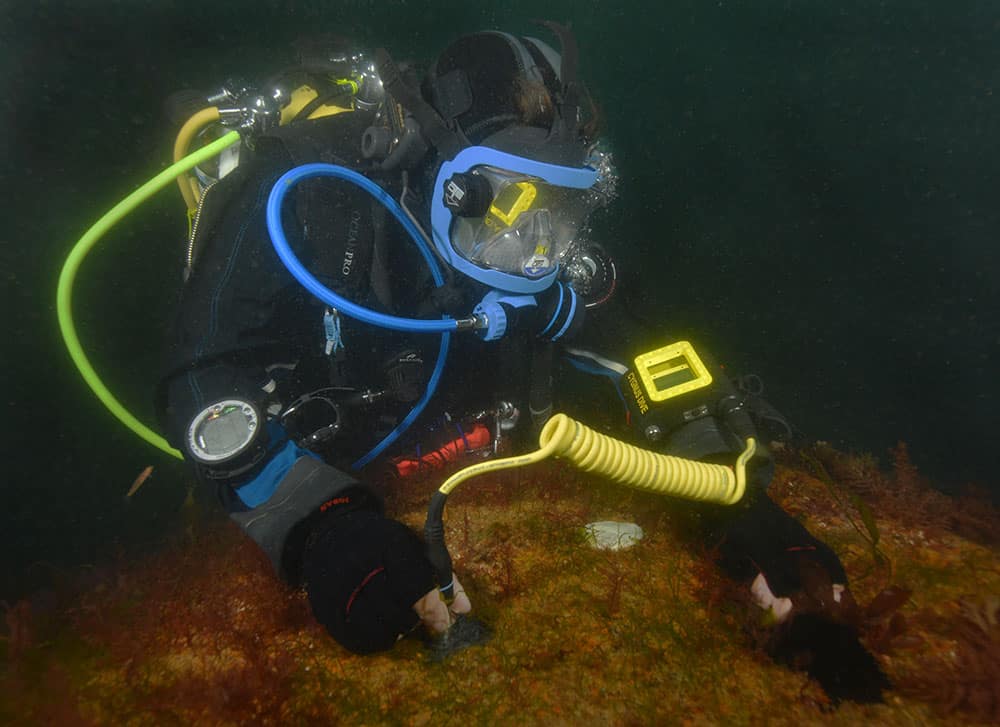In the marine and shipping industry, where steel corrosion is a constant challenge, Cygnus ultrasonic thickness gauges play a major role in providing a solution to this challenge.
The Cygnus Multiple-Echo technique has been recommended and endorsed by the world’s leading classification societies for measuring the remaining metal thickness through protective coatings. The Multiple-Echo technique provides accurate and reliable measurements, this measuring technique can sometimes be difficult to achieve when measuring on, extreme front face and back wall corrosion and round bars such as anchor chain links. This is why Cygnus has introduced Single-Echo, using twin-crystal probes, into their product range – providing users with the flexibility to alternate between the two, starting with Cygnus DIVE…
Underwater Thickness Measurements
Cygnus DIVE is a wrist-mountable underwater thickness gauge providing an invaluable free-hand while performing remaining metal thickness measurements. Originally launched two years ago, the DIVE now has a number of key new features:
- Twin-crystal probe option to assist in taking measurements on uncoated material e.g. anchor chain links, extremely corroded steel and plastic outfall and dredge pipes
- Measurement Stability Indicator (MSI™ EXCLUSIVE TO CYGNUS THICKNESS GAUGES, this shows when a reading in single-echo mode is stable by turning the thickness reading from red to yellow
- A super bright AMOLED display, easily viewable by both the diver and his camera, in the poorest visibility
- Updated topside and reporting software allowing measurements and A-Scans to be displayed on the surface and data logged topside.

Cygnus DIVE Underwater Thickness Gauge used to inspect the hull of the A7 Submarine
(Photo courtesy of The SHIPS Project)
The ability of the diver to wear Cygnus DIVE on his arm or wrist is a big advantage says Graham Haines, Sales Director for Cygnus. Having a free-hand when diving offers obvious advantages and together with the AMOLED display, makes viewing so much easier by both the diver and support engineers on the surface via the diver’s camera. The AMOLED display not only gives much better viewing, especially in poor visibility, it also offers an A-Scan display which helps verify true back wall readings in difficult measuring applications. In data-logging mode Cygnus DIVE can store up to 5,000 measurements together with each measurement A-Scan for future analysis, should the need arise.
Ultrasound can also be used for checking the weather tightness of hatch cover seals on bulk carriers…
Cygnus Hatch Sure ultrasonic hatch cover leak detection system comprises a powerful ultrasonic transmitter with 19 x 40 KHz elements which is placed within the ships hold. This fills the hold with ultrasound and any that escapes (through gaps in damaged areas of the seals) can be detected by the operator on deck using a sensitive receiver/listening device, locating areas that might leak in heavy seas or rain.

This offers many advantages over the conventional technique of hose testing which uses large volumes of water sprayed at the rubber seals. Ultrasound can be used in sub zero temperatures, identifies the precise damaged area of seals, is repeatable and avoids pollution of harbours due to contaminated water.